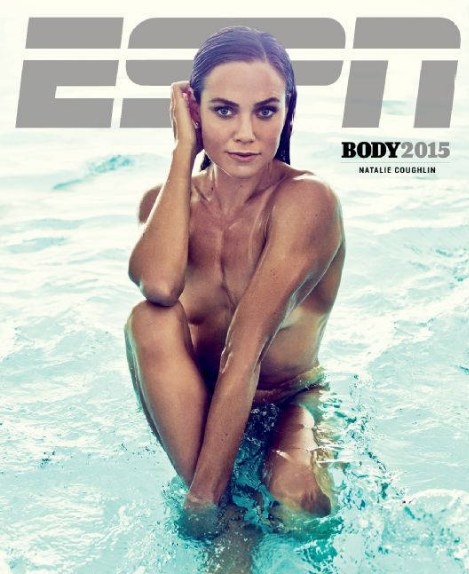1. Classifying Times

2. Media

3. Prohibited to Swim Certain Events
View this video on YouTube
Throwing like a girl. Swimming like a girl. Playing like a girl. Often times "like a girl" has been defined as "not having the ability" to perform proficiently. (Shinew 40) Women are portrayed as weak and inferior to men. Female athletes "…who are skilled and forceful subjects, and who embody power, challenge the equation of physical power with masculinity."(Whitson 1994). But, even with this challenge, they are still banned from competing in certain events. For example, in the Olympic Games, female swimmers are not allowed to swim more than an 800-meter distance while male swimmers are allowed to swim the 1,500 meters. Swimmers such as Katie Ledecky, a 17-year-old record-breaker, whose favorite events are the 800 and 1,500 meters freestyle, aren't allowed to swim the 1,500 because of the set rules. As said in the article by Kate Dries, Olympics Committees have not added the event because it is "purely historical". Debbie Meyer, the first female to hold the long distance records, questioned why women are not allowed to swim the 1,500 in today's world. Olympic female swimmers like Ledecky, Missy Franklin and UF Gator Elizabeth Beisel are seen as inferior to the male swimmers of today. Even though Ledecky's "personal best of 15 minutes 34.23 seconds, clocked in June, would have made her 28th, in a field of 59, in the men's event Wednesday at the national championships.", she was still a woman and biologically slower than the fastest heat of guys, quoted Dries from the Times article. Ledecky has been the fastest endurance swimmer as of now, but an event cannot be added for just one female athlete whose time compared to other female swimmers is outrageous. With female athletes' underrepresentation comes a lack of audience, which leads to cutting down of events and underappreciation for female distance swimmers. Like said by Kate Dries, "getting an audience on a national scale to see her compete that way could be an uphill battle."
Ross, S. R., & Shinew, K. J. (2008). Perspectives of women college athletes on sport and gender. Sex Roles, 58(1-2), 40-57. doi:http://dx.doi.org/10.1007/s11199-007-9275-4
4. Unjust Representation in Science Research

5. Portrayed as Models not Athletes

6. Fewer Scholarship Opportunities
View this video on YouTube
"No person in the United States shall, on the basis of sex, be excluded from participation in, be denied the benefits of, or be subjected to discrimination under any educational program or activity receiving federal assistance.", this quote is found in the Constitution in the Amendment on Education in which Title IX gave female athletes more opportunities in the world of sports. However, in Playing but Losing, an article by Cheryl Cooky and Nicole Layoi, there is an exploration on the leftover inequities towards women. In terms of scholarship opportunities, female athletes are provided approximately 1.3 million fewer scholarships in comparison to males at a high school level. Moreover, in the college level, more than half of the students at NCAA schools are women, but they only receive 44% of the scholarship opportunities. It is sad to see that even though female athletes display the majority of collegiate-level swimming teams, the vast majority are left out on scholarships. Yet, men have an abundance in scholarship opportunities even though they don't represent the majority of the population.
Cooky, Cheryl, and Nicole M. Lavoi. "Qualifying Times: Points of Change in U.S. Women's Sport." Gender and Society 30.1 (2014): 136-39. Sage Journals. 11 Dec. 2014. Web. 22 July 2016.



